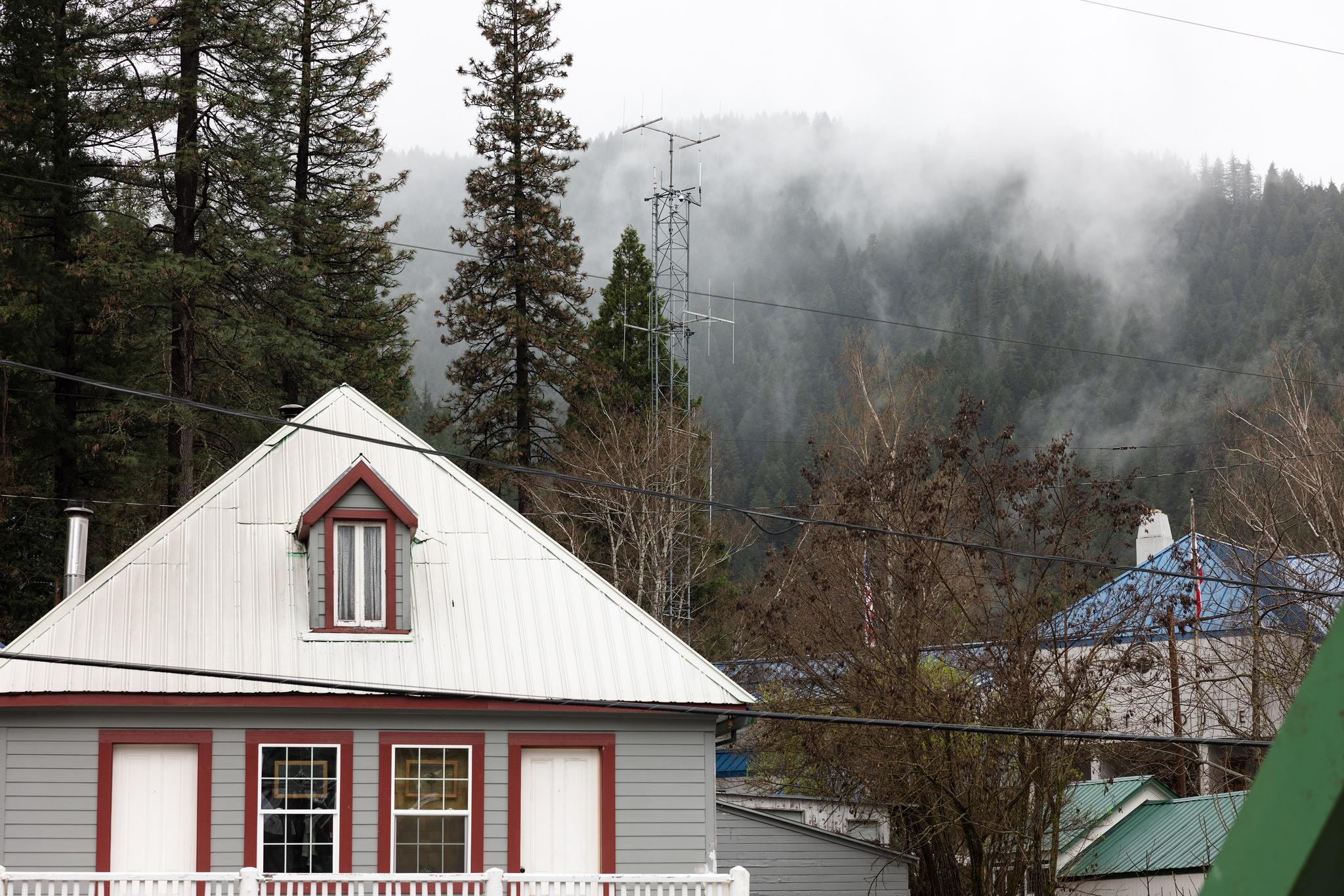Nevada County Discusses Cell Tower Ordinance Rework
April 6, 2025

Communications towers, such as this one in Downieville, may soon face more stringent rules in Nevada County.
NEVADA CITY — On March 31st, Nevada County’s District 3 Supervisor Lisa Swarthout hosted a public meeting in Nevada City to discuss and request feedback on potential updates to the county’s 20-year-old cell tower ordinance. This policy shapes how new cell towers are approved, placed, and designed, addressing everything from safety standards to visual appeal.
Among the key updates proposed is enhanced safety oversight. Currently, the county relies on pre-installation assurances that cell towers will meet Federal Communication Commission (FCC) emission standards. However, the revised ordinance would require post-installation certifications to confirm compliance. Associate Planner David Nicholas emphasized that for installed towers, the change would allow the county to “actually see that it’s meeting those standards it was supposed to meet.”
In addition to strengthening safety measures, the Planning Department seeks to streamline the approval process for certain cell towers. Specifically, the ordinance would simplify permitting for smaller towers and temporary setups used during emergencies.
The conversation then shifted to appearance, a key concern for many residents. Nicholas addressed the ordinance’s “effectively invisible” standard, noting, “We want it to be clarified because it hasn’t historically been applied as invisible, and we’re looking for some sort of way to clean that up a little bit.”
Several other practical changes were proposed: notifying residents within 1,000 feet of new towers, refining application guidelines for visual effects, and enhancing maintenance standards. Additionally, setbacks would increase from 100% to 150% of a tower’s height—about 250 feet for a 170-foot tower—to ease proximity worries.
Community Perspectives
Public comments revealed a broad spectrum of opinions. Denise from District 3 pushed for stricter rules, stating, “I would request that all cell towers, regardless of height, are required to have a 400-foot setback at least. And that conditional use permits are required.” Another resident flagged health risks, saying, “A small cell at 25 feet distance from a home produces the same [radio frequency] effects as a major macro cell at 600 feet distance.”
Aesthetic and environmental impacts also sparked debate. Sean from District 1 criticized disguised towers, remarking, “We see these cell towers that look like Christmas trees. They are not Christmas trees. They are full of plastic debris.” He added, “We all know it’s a cell tower. Let’s not decorate them like fake Christmas trees; they look terrible anyway,” while holding up plastic branches blown by the wind into his backyard from a nearby cell tower.
On the flip side, some emphasized connectivity needs. Rick Partridge from District 1 shared a personal story: “As soon as you head up Coyote Road to my house, four miles from here, I lose cell phone coverage. [...] When the teenager got hit on a road bike coming around the curve on Cooper Road last year, no one could make a call.”
Looking Ahead
The Planning Department will refine the ordinance based on feedback given. A draft will soon open for a 30-day public review, followed by a Planning Commission evaluation. The Board of Supervisors will then be responsible for passing the finalized ordinance into law.
Featured Articles

Two New Fuel Break Projects Proposed in Sierra County →
April 4, 2025
Tahoe National Forest proposes new fuel break projects to enhance fire management and protect local wildlife.
Supervisors Declare Gray Wolf Emergency and Celebrate Dean Fischer →
April 2, 2025
Nevada County Discusses Cell Tower Ordinance Rework →
April 6, 2025
Sierra City Bear Break-In Signals Impending Active Season →
April 3, 2025
Plumas DA Provides Details on HR Director Conviction at Board Meeting →
April 2, 2025